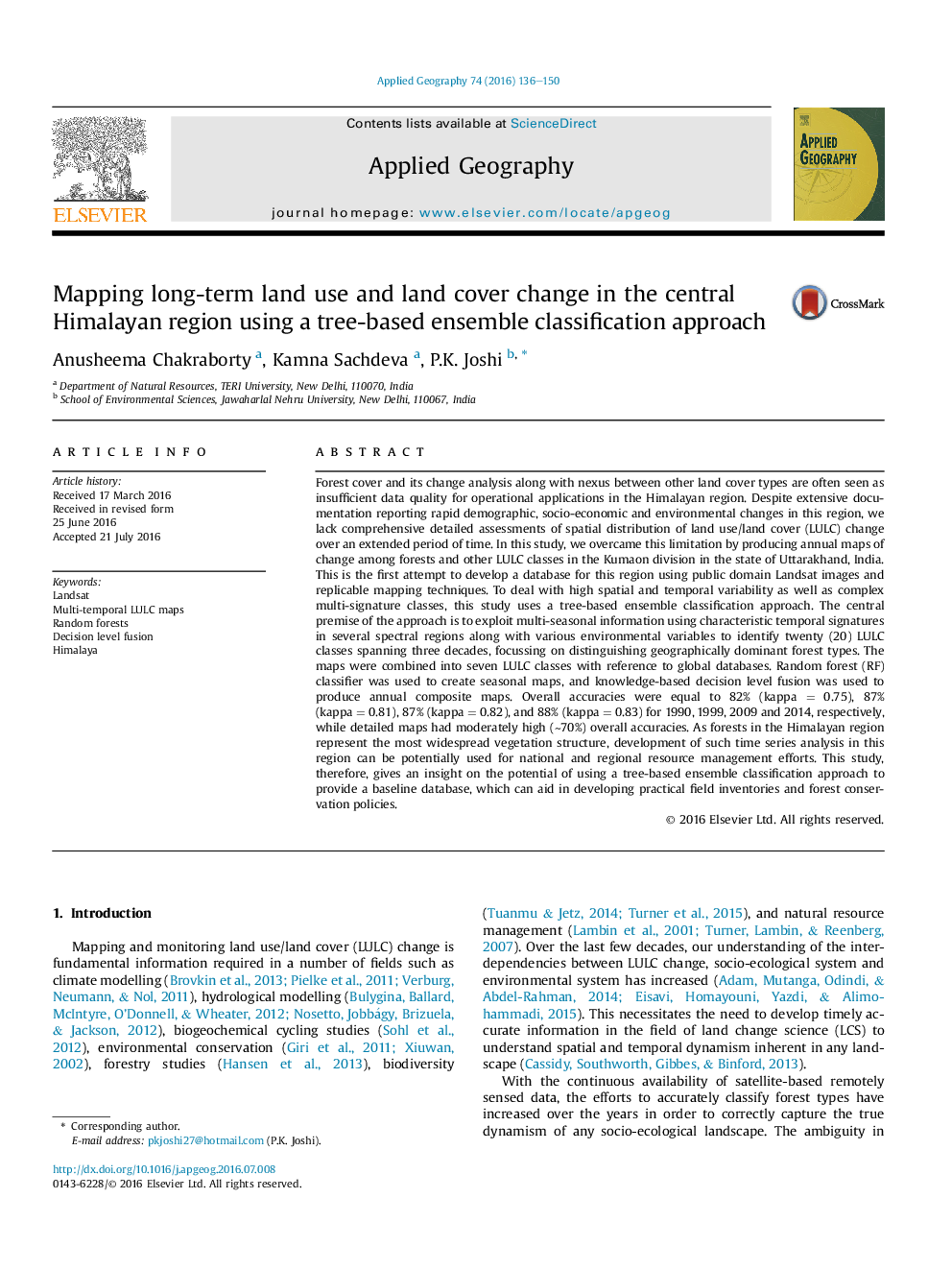| کد مقاله | کد نشریه | سال انتشار | مقاله انگلیسی | نسخه تمام متن |
|---|---|---|---|---|
| 83120 | 158687 | 2016 | 15 صفحه PDF | دانلود رایگان |
• Developed temporal LULC maps using seasonal Landsat data and ancillary information.
• Combination of RF classifier and knowledge-based decision level fusion.
• High (>80%) accuracy of LULC maps for the central Himalayan region.
• Prospective use of proposed methodology in similar heterogeneous mountain terrains.
• Application in developing field inventories and forest conservation policies.
Forest cover and its change analysis along with nexus between other land cover types are often seen as insufficient data quality for operational applications in the Himalayan region. Despite extensive documentation reporting rapid demographic, socio-economic and environmental changes in this region, we lack comprehensive detailed assessments of spatial distribution of land use/land cover (LULC) change over an extended period of time. In this study, we overcame this limitation by producing annual maps of change among forests and other LULC classes in the Kumaon division in the state of Uttarakhand, India. This is the first attempt to develop a database for this region using public domain Landsat images and replicable mapping techniques. To deal with high spatial and temporal variability as well as complex multi-signature classes, this study uses a tree-based ensemble classification approach. The central premise of the approach is to exploit multi-seasonal information using characteristic temporal signatures in several spectral regions along with various environmental variables to identify twenty (20) LULC classes spanning three decades, focussing on distinguishing geographically dominant forest types. The maps were combined into seven LULC classes with reference to global databases. Random forest (RF) classifier was used to create seasonal maps, and knowledge-based decision level fusion was used to produce annual composite maps. Overall accuracies were equal to 82% (kappa = 0.75), 87% (kappa = 0.81), 87% (kappa = 0.82), and 88% (kappa = 0.83) for 1990, 1999, 2009 and 2014, respectively, while detailed maps had moderately high (∼70%) overall accuracies. As forests in the Himalayan region represent the most widespread vegetation structure, development of such time series analysis in this region can be potentially used for national and regional resource management efforts. This study, therefore, gives an insight on the potential of using a tree-based ensemble classification approach to provide a baseline database, which can aid in developing practical field inventories and forest conservation policies.
Journal: Applied Geography - Volume 74, September 2016, Pages 136–150
